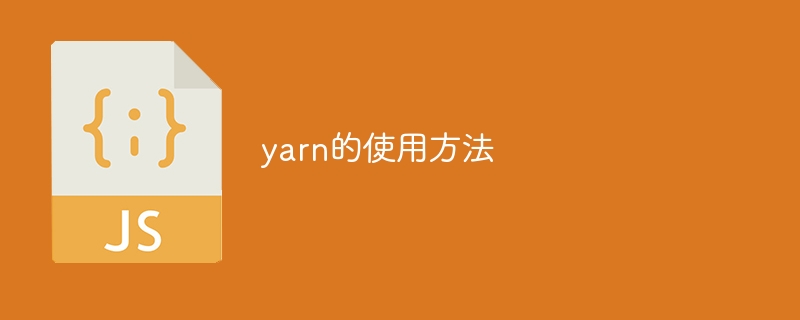Home >Web Front-end >JS Tutorial >How to use yarn
How to use yarn
- 王林Original
- 2024-02-19 13:46:131021browse

How to use Yarn requires specific code examples
With the increasing development of front-end technology, the complexity of the project has gradually increased. In order to better manage and maintain front-end projects, package management tools have become an indispensable part of the project development process. As a fast, reliable, and safe package management tool, Yarn is loved and used by the majority of front-end developers.
So, how to use Yarn correctly? This article will introduce you to the use of Yarn in detail and give specific code examples.
First, we need to install Yarn on the computer. Yarn supports a variety of operating systems, including Windows, Mac, and Linux. Before installing Yarn, we need to install Node.js first, because Yarn is developed based on Node.js. After the installation is complete, we can use the following command to verify whether Yarn is installed correctly:
yarn --version
If the Yarn version number is output, it means Yarn has been successfully installed.
Next, let’s take a look at Yarn’s core commands.
- Initialize the project
First, we need to initialize Yarn in the project folder. Enter the project folder on the command line and execute the following command:
yarn init
After executing the above command, Yarn will guide us to complete the project initialization process. We need to enter some basic information, such as project name, version, description, etc. Finally, Yarn will generate a package.json file in the project folder, which is used to record project information and manage dependent packages.
- Add dependency packages
In projects, we usually need to introduce third-party libraries or frameworks to implement some functions. Yarn can be used to easily add and manage these dependency packages.
The following is an example of a command to add a dependent package:
yarn add [package]
Among them, [package] represents the name of the dependent package to be installed. For example, if we want to install the React library, we can execute the following command:
yarn add react
In addition to installing a single dependent package, Yarn also supports installing multiple dependent packages at the same time. You only need to specify multiple package names in the command. .
- Delete dependent packages
Sometimes, we may need to delete dependent packages that are no longer needed in the project. This is easily achieved using Yarn.
The following is an example of a command to delete a dependent package:
yarn remove [package]
Among them, [package] represents the name of the dependent package to be deleted. For example, if we want to delete the lodash library, we can execute the following command:
yarn remove lodash
Similarly, Yarn also supports deleting multiple dependent packages at the same time. You only need to specify multiple package names in the command.
- Update dependency packages
In order to ensure the stability and security of the project, we need to regularly update the dependency packages in the project. Yarn provides a convenient command to update dependent packages.
The following is an example of a command to update a dependent package:
yarn upgrade [package]
Among them, [package] represents the name of the dependent package to be updated. For example, if we want to update the axios library, we can execute the following command:
yarn upgrade axios
Of course, Yarn also supports updating multiple dependent packages at the same time. You only need to specify multiple package names in the command.
In addition to the above core commands, Yarn has many other commands and options to meet different project needs. When using Yarn, we can get more help through the following command:
yarn --help
The above is the basic usage of Yarn and code examples. By rationally using Yarn, we can better manage and maintain front-end projects, improve development efficiency, and reduce errors. Hope this article is helpful to everyone!
The above is the detailed content of How to use yarn. For more information, please follow other related articles on the PHP Chinese website!

